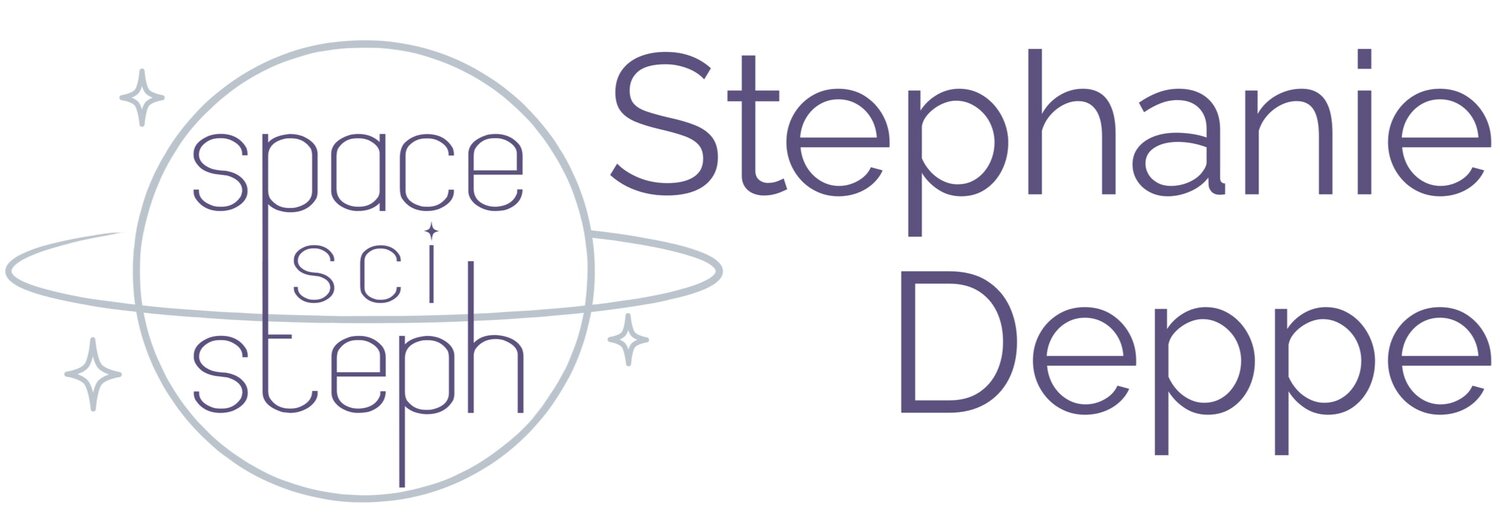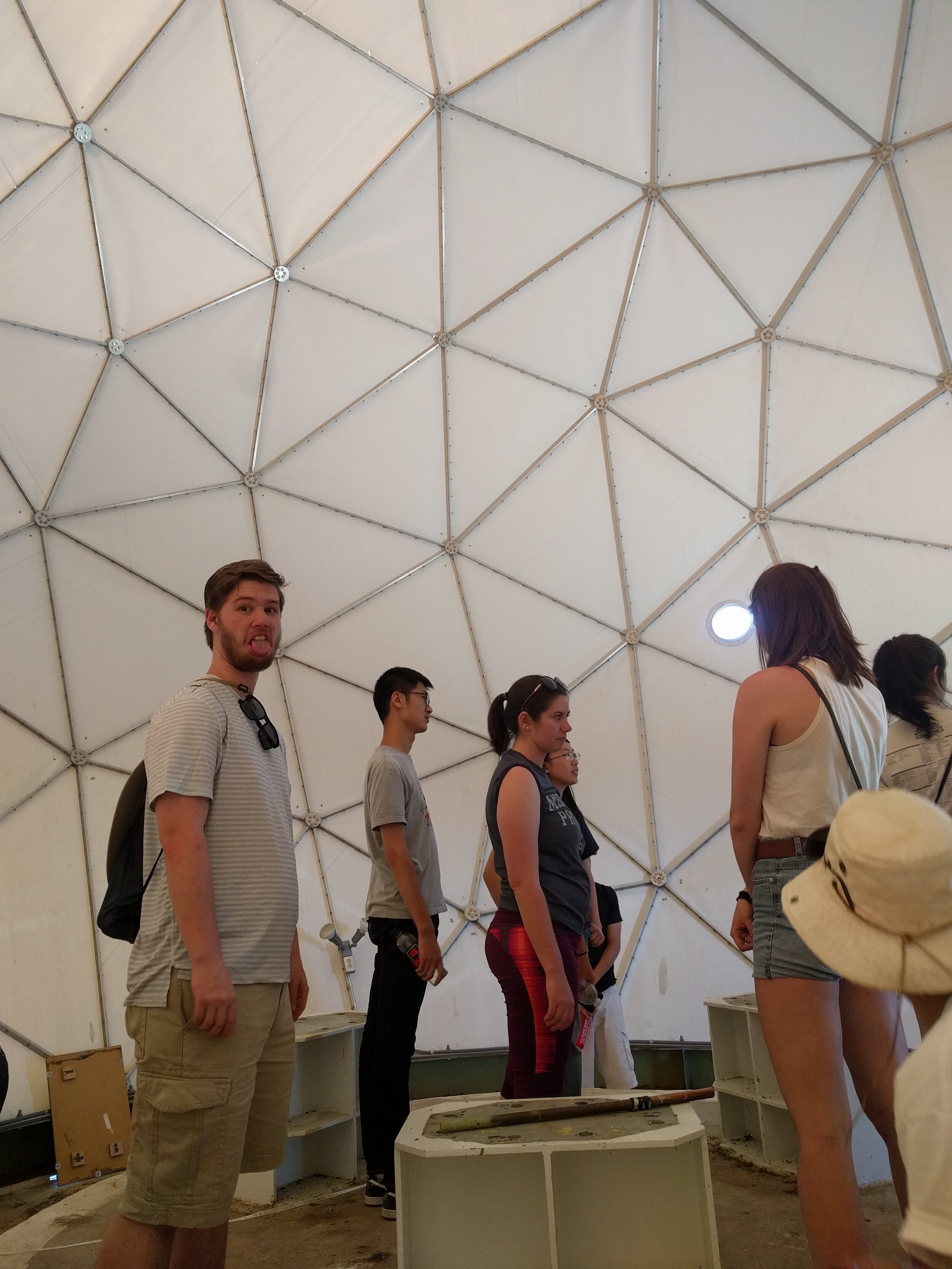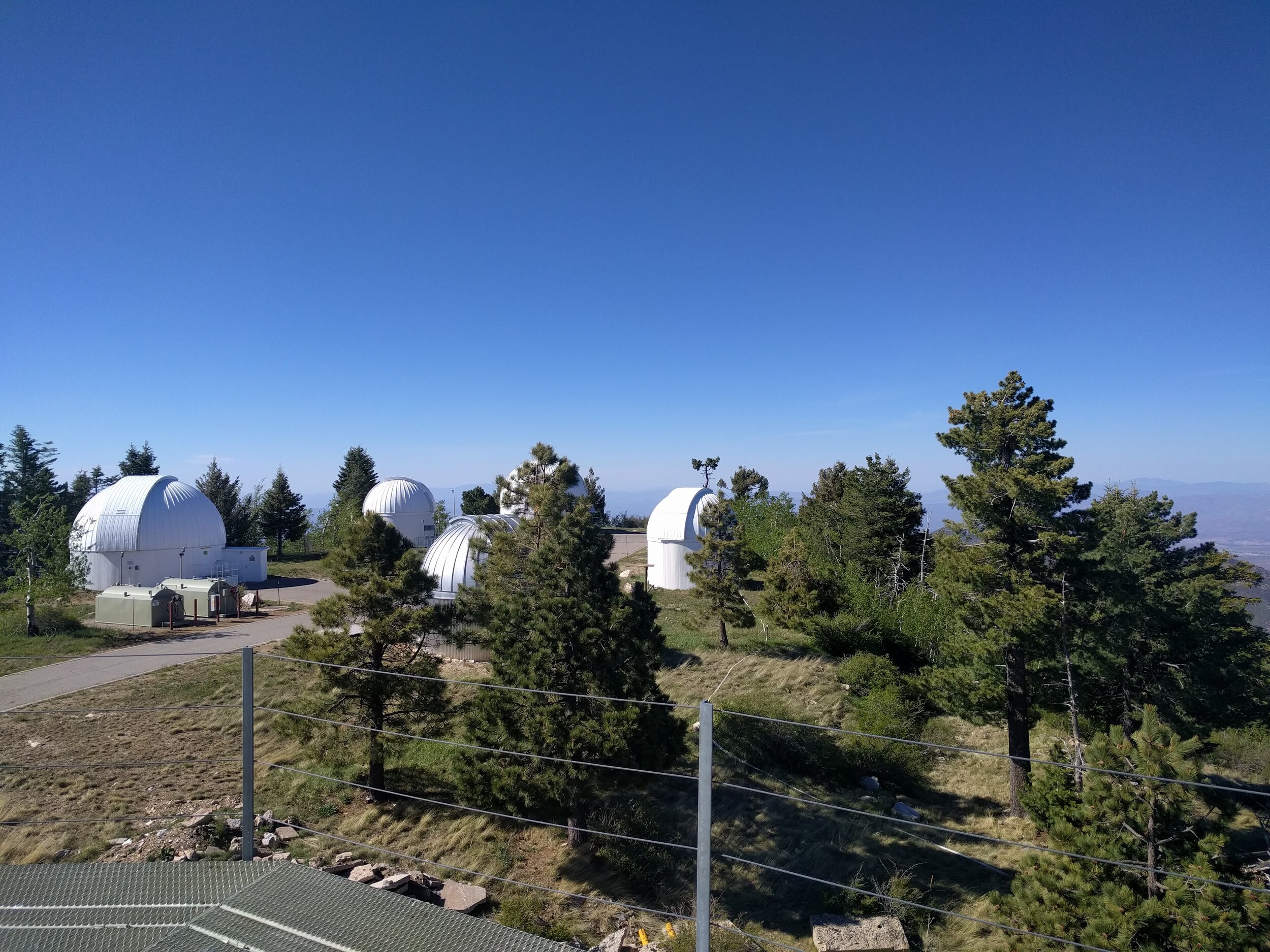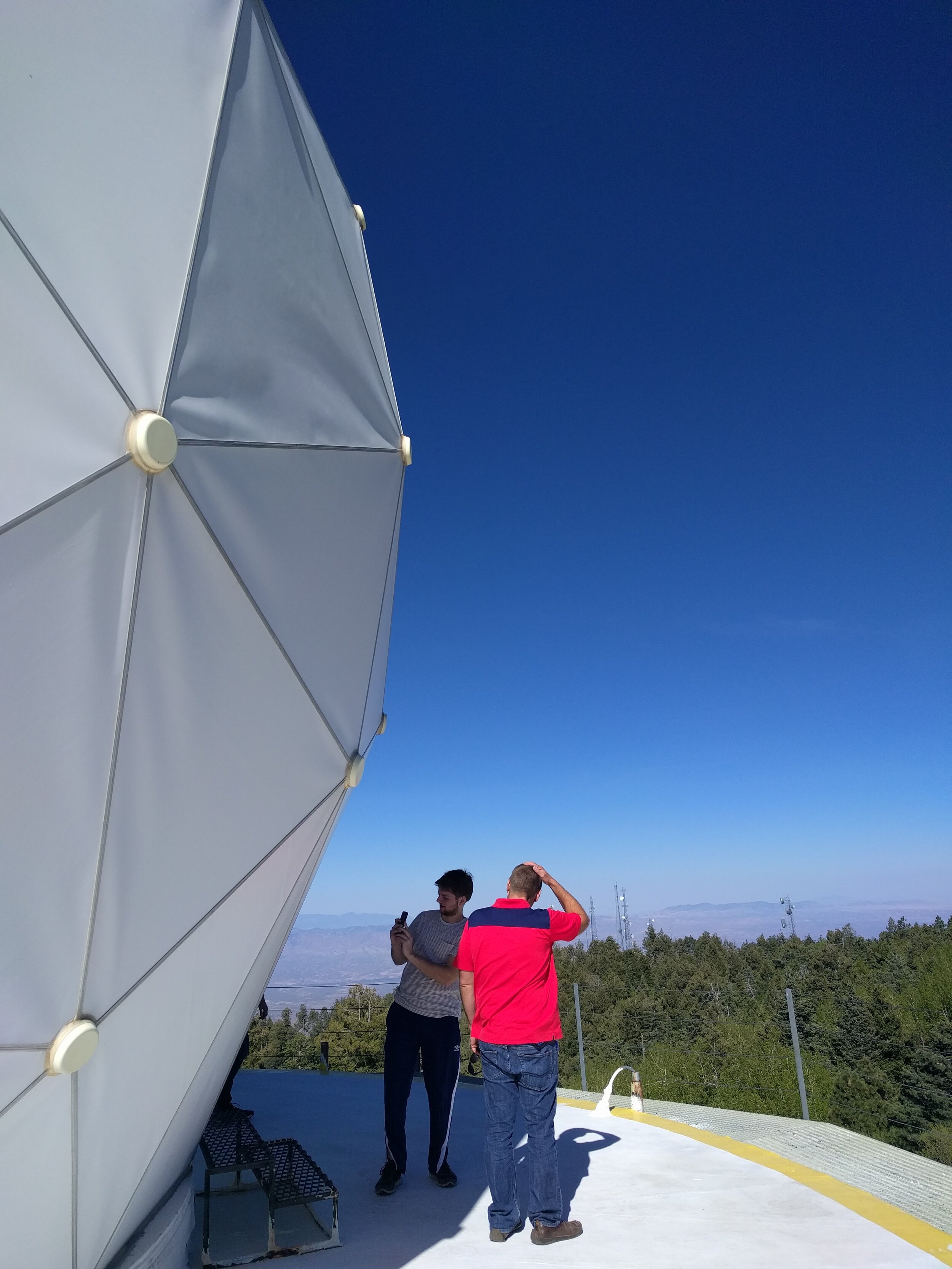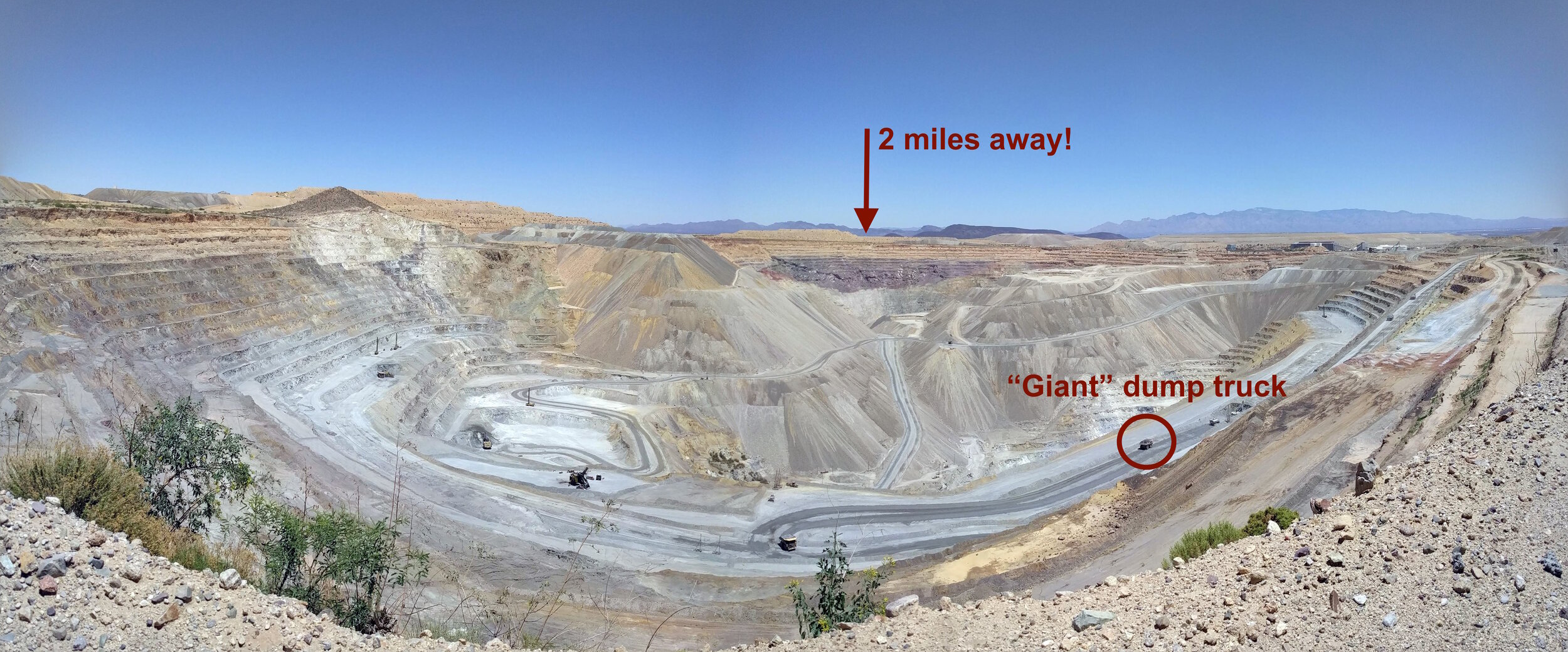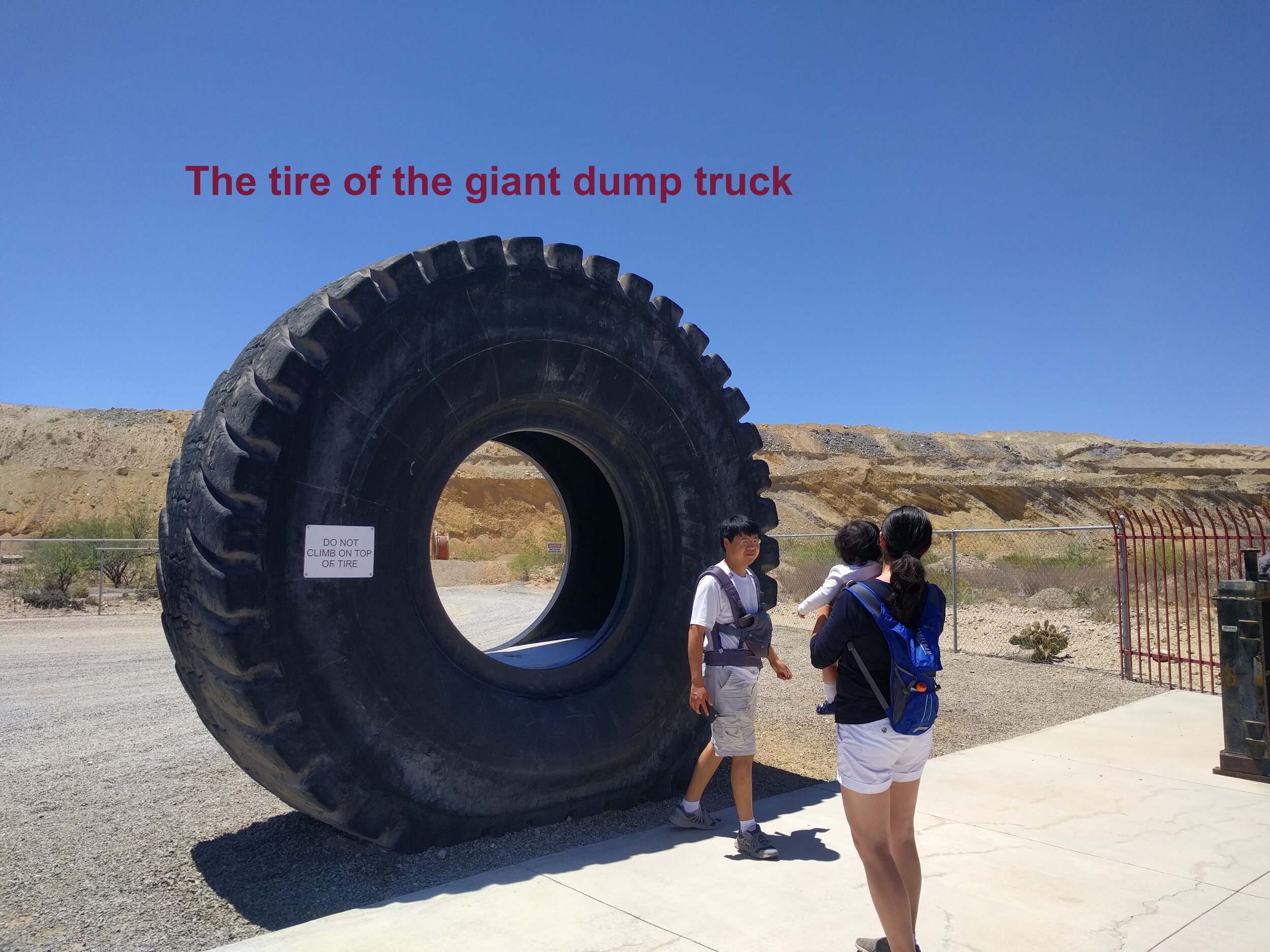Astronomy, Telescopes, and Bears, Oh My! (Part 3)
/Welcome to Part 3 of my blog series documenting my amazing time as an instructor of a ground-based astronomy course based at Kitt Peak National Observatory in Tucson, AZ! If you missed Part 1 or Part 2, be sure to head over there and check out those posts! If you haven’t browsed through my photo album of the trip, you should do that also! Enough chatter, let’s get to the post.
Monday, May 22nd
Not going to lie, this was probably one of my favorite days out of my month in Arizona (or in the top five at the very least). Why? Well, we got to take a field trip to another of the many observatories in southern Arizona, and man was this a cool one! What wasn’t so cool was the 2.5 hour drive to get there, but it was worth it.
Our destination was the Fred Lawrence Whipple Observatory, home of the VERITAS gamma ray telescope and the 6-m Multiple Mirror Telescope (MMT), which has, you guessed it, a single mirror. Wait a second…well, it used to be made of multiple mirrors, but let this be a lesson to all of you considering getting into the telescope naming business. The MMT is somewhat of a testing telescope, in that it was the first to use an array of mirrors as the primary “mirror” and it was also the first to have a primary mirror larger than 4-m. Of course, to install the giant 6-m mirror they had to first remove the multiple mirrors, leaving us with the now inaccurate name.
The first part of our tour was a video about the construction of the MMT. You might be thinking, “Oh, well that’s cool, but haven’t you been learning about telescopes for the past two weeks?” Well, yes, but the MMT is no ordinary telescope. You see, it’s perched on a very pointy peak and the road up the mountain is very steep with no guard rails, culminating in a 24% grade incline to the telescope site. Not to mention that there isn’t actually room for anything larger than a van to turn around up there…it might not be surprising then that the observatory doesn’t actually allow members of the public to drive up there themselves. Instead, we got to ride up in a fancy school bus!
We wound our way up the steep, winding, dirt road, taking a couple of hours to reach our picnic spot after stopping briefly at an older observatory with lots of historical telescopes. After lunch, we were given the option to either walk the remaining half-mile to the summit or to ride in the SUVs they had ready for us. Remember that I said nothing larger than a van can turn around up there? Yes, that includes busses….I opted to walk. During the walk (and also during the whole bus ride up, to be honest) I was thinking about the process of getting that huge 6-m mirror up this crazy road – 1) the truck driver couldn’t see the road during that last stretch with a 24% incline so had to be directed and 2) they had to use a crane to pick up the truck and turn it around so it could drive back down the mountain! To this day, I still wonder who decided it would be a good idea to put that observatory where it is.
Here are some fun facts about the MMT:
The MMT has served as a testbed for new astronomical instrumentation and imaging techniques, helping move astronomy forward.
As mentioned before, it’s not actually made of multiple mirrors anymore! Instead, it has a single 6-m primary mirror. Consequently, “MMT” isn’t actually an acronym anymore.
They actually had to expand the building once the 6-m mirror was installed, because the telscope (primary + secondary mirrors, and all the necessary structural supports) didn’t fit anymore.
The MMT was the first telescope to have a deformable secondary mirror, which allows for real-time corrections to atmospheric distortions of light and greatly improves the quality of data collected.
The MMT was the first large telescope to use an altitude-azimuth mount (like the WIYN telescope) rather than an equatorial mount (like the Mayall telescope).
Rather than the telescope rotating inside the building to switch observing targets, the entire building rotates with the telescope! Consequently, the building has snow plow shovels attached to it to clear snow pile-ups as it rotates.
They were having a problem with cold air leaking from the telescope and messing up observing conditions inside the building, so the solution was to run to Walgreens to buy shower caps to put over the leaking vents.
Tuesday, May 23rd
Tuesday was a pretty uneventful day in comparison to Monday. The morning consisted of a lecture about how observatory sites are chosen (I’m still not convinced they really thought the MMT Observatory through…). Some basic criteria for an astronomical observatory site are that it be away from light pollution, in a dry place (water in the air really messes with the quality of the images, causing the stars to shimmer), reasonably accessible, and generally at a high elevation (higher air is generally drier, and there’s also less air to begin with).
In the afternoon we took yet another tour of the WIYN and Mayall telescopes, this time focusing on the telescope domes and enclosures. The domes’ purposes are to stabilize the air for the telescope and camera to improve data quality. The Mayall telescope’s building also had one more notable design choice – it was built 18 stories tall on the theory that data quality would be better if you could get the telescope farther from the thermal sink that is the ground. It turns out that the 18-story building really didn’t do anything, but at least the Mayall telescope is now an iconic landmark of Kitt Peak!
Wednesday, May 24th
Wednesday was another really cool day with another trip to a different observatory (who am I kidding, this whole month in Arizona was really cool). This trip was to the Mt. Lemmon observatory, and not only did we get to tour more interesting telescopes, but we got to hike and picnic at the top of a mountain! This was good timing, because my hiking and rock climbing urges were starting to make a comeback by this point…
Our trip started with a two hour drive in what was by now everyone’s absolute favorite 15-passenger van. This drive was quite different than the one to the MMT, in that the Mt. Lemmon Observatory was on top of a mountain with lots of popular trails frequented by tourists. So there was considerably more traffic on the way up, not to mention that we were actually able to drive ourselves up this mountain. We stopped a few times for some exploring and hiking before eating lunch prior to our appointment with the Mt. Lemmon Observatory staff.
Mt. Lemmon actually used to be a military site, so a lot of the buildings have that type of feel. In the past it was used as a radar station for the US Air Force, so yes, there is a radar tower there that was used to track Russian spy planes during the Cold War era. And yes, we did get to go inside it (more on that in a bit). One of our first stops was to the small telescope used for Education and Public Outreach, which I think every observatory should have! We then paid a visit to the telescope used by the Catalina Sky Survey, a Near-Earth Object (NEO) survey searching for asteroids that might pass by Earth a little too close for comfort…interestingly this survey is in direct competition with a group that operates at Kitt Peak, but the two groups seemed to be on good terms. I think in this case, everyone wins from a bit of competition. This stop was particularly fun because one of the astronomers was there that day and told us a bit about how NEOs are actually picked out of the data. While I also study objects in the Solar System, the objects I’m concerned about orbit farther away than Neptune, while this astronomer’s objects could potentially pass closer than the Moon! All in all, I definitely learned some things about how to detect the closest Solar System objects (as opposed to the farthest)!
Another stop on our tour was the recreational building which featured a lounge area, bathrooms+showers, and even an indoor basketball court. On our way out of the building we passed through an old control room that definitely looked like it hadn’t been used in a while – a lot of the stuff at this observatory was put into place in the 60s, 70s, and 80s. Possibly the most obvious artifact of this was the giant radar tower (it looks more like a ball, actually) that we got to go inside. Not only was it cool learning about the history of the tower, but we had a pretty good view of the summit from on top of it.
Then it was time for the long trek back to Kitt Peak…luckily we were able to break it up with some burgers in Tucson!
Thursday, May 25th
Thursday was a bit uneventful, with the students spending the morning session working on the data analysis for their final projects. I think some of them were starting to feel the pressure a bit, with less than a week left before the final projects were due and numerous tours and off-site excursions still to happen…they made some good progress though, and most were excited for the afternoon’s tour when it came time.
I’m pretty sure we visited every single telescope on Kitt Peak during this month….if not, it was pretty darn close. Thursday’s tour was given by the same person who showed us around Mt. Lemmon (there were a LOT of cumulative driving hours between him and our group during these two days). We first visited the Steward Observatory Bok telescope. I’d been intrigued by this one for the whole month because its dome looked different from every other telescope on site. Specifically, it wasn’t the traditional dome shape. Instead, it was sort of a rounded cylinder type thing. It’s easiest just to show a picture, so that’s shown on the right. The design is supposed to help minimize vibrations from wind atop Kitt Peak, and I think it does actually help with that.
The next stop was to one of the oldest telescopes I’ve ever seen – it uses clock-style counterweights rather than hydraulic power like most modern telescopes use. The telescope really isn’t used much anymore, but that was pretty cool to see. We also got to visit the Spacewatch telescope, which is the competitor survey to the Catalina Sky Survey on Mt. Lemmon. The weirdest thing about this telescope (aside from its user climbing all over it like it was a jungle gym) was the fact that the detectors were in between the primary mirror and secondary mirror. What?! The designs I’d seen in the past had either the detectors at the primary focal point (so no secondary mirror at all) or a hole in the middle of the primary mirror where the detectors would capture the light after it reflected off the secondary mirror back toward the primary mirror. I had never seen the detectors smack in the middle of the two before. It turned out that this design was motivated by price limitations and it actually works better than you might think.
After our afternoon of tours, everyone got enjoy a free evening. Well, it was free for me, the students still had projects to finish!
Friday, May 26th
Friday morning’s lecture was actually pretty interesting. An astronomer from the National Optical Astronomy Observatory (NOAO) came to talk to us about the history of Kitt Peak and NOAO. I had not realized that Kitt Peak was established before NOAO was. Furthermore, astronomy used to be very much for individual astronomers. In the 50s, there wasn’t much in the way of collaboration between parties, and it was more like if someone was working on a specific project, others wouldn’t touch it. With the formation of NOAO and the Association for Universities for Research in Astronomy (AURA) around the 60s, astronomy started to become more of a public, collaborative effort. This was a source of tension for a while because time on telescopes was allotted based on contribution – that is, large universities with more funding got more time while small ones were blocked out. Another source of tension was that money started being directed into building fewer larger telescopes. While some smaller parties still feel this way, I think tensions have largely eased by this point.
The afternoon’s tour wasn’t all that exciting, so I won’t spend much time on it…we toured the facilities of Kitt Peak – that is, the power generators, water systems, and the like. I realize this stuff is very important for a functioning observatory, but I personally didn’t have much interest in the tour. It was pretty amazing to see the giant generators though – they could keep the entire observatory running for many hours.
Saturday, May 27th
Yay, another off-site excursion! Back into our favorite van! Today’s excursions were to the ASARCO Copper Mine, the Titan Missile Museum, and the San Xavier del Bac Mission.
First up, the copper mine. I was pretty excited because I had never seen such a huge mine so close. We took a tour bus out to a lookout point overlooking the mine and it took me a while to grasp the scale of this thing. The only clues my brain had were how tiny the giant dump trucks were down at the bottom (or at least as far as I could see). Another clue was pointed out by our tour guide: “See that opposite rim? That’s two miles away.” While the mine was certainly impressive, it turns out that copper mines stink. Like, really bad. So as we were tracing the steps of copper ore from its raw form to final form, all I could think was that it was smelling worse and worse. It turns out that processing copper ore is really disgusting, and I admire the people who are able to do it.
The next stop was the Titan Missile Museum, which was definitely one of the coolest places we saw during this whole month. It’s a retired Cold-War-era bunker that would have been one of the places a nuclear missile was launched from had things come to that. Also, the missile housed there was the largest ever used by the US. Consequently, it would been one of the places targeted by the USSR…so it had to be able to withstand a nuclear detonation nearby. We got to walk through the command room, and a couple of our students even got to act as commanders and go through the launch sequence. Finally, we walked to the other end of the bunker to see the beast itself – the missile with the (decommissioned) warhead. That was kind of surreal actually. It was huge! And, unfortunately, impossible to capture the scale of in a picture…but of course, that didn’t stop me from trying.
Our last stop of the day was the San Xavier del Bac Mission, which on our way back from the missile museum. It was a beautiful old church established by the Spanish on Tohono O’odham (the native people of that region) land. Interestingly, a large percentage of Tohono O’odham are devoutly Catholic as a result of Spanish conquest. People come from around the reservation, which is one of the largest in the Southwestern US, to worship at this mission.
Sunday, May 28th
The end of another week means another day off! Since it was Memorial Day weekend, I decided to take the rental car down to Tucson to visit a friend who is in graduate school at the University of Arizona. He and a bunch of his friends were planning to have a pool party and BBQ, as one does for Memorial Day. Of course, I hadn’t brought my swimsuit because there are no pools on Kitt Peak….but I still had fun eating great food and relaxing by the poolside! After heading back to Kitt Peak, I spent the rest of the evening with a good book.
We’re almost there friends. We’re almost done with this crazy amazing adventure I had in southern Arizona. Be sure to check back soon for Part 4 of this series!
